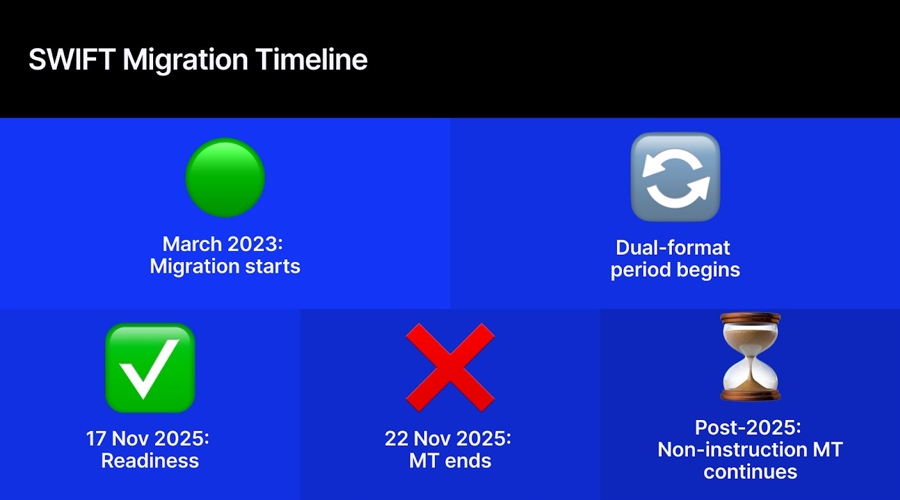Bob owned a very successful bakery that specialized in large wedding cakes, but a bad thing was about to occur.
Its procedure called for his staff to bake the cake two days before the actual event. The next morning, they would ice and decorate the cake. Then, later in the afternoon they would prepare it for delivery.
On this particular weekend they were scheduled to deliver three large wedding cakes. During the packaging and preparation for delivery of one of the orders on a Friday afternoon they reviewed the order and discovered that the chocolate cake they had baked was in fact supposed to be a marble cake—the bride’s family referred to the cake as “chocolate and vanilla”, but it was written down as chocolate.
Although they had a procedure that called for verifying all wedding cake orders in writing with the person placing the original order, this process was not followed in this situation. So, at the last minute, the cake had to be thrown out and entirely redone.
The good news was the customer ended up being very pleased with the second cake, the marble one. However, Bob’s company failed to execute properly, since the cake-verification process they had in place was not followed.
Has something like the above ever happened to you? A system your organization had in place was not followed and it required a heroic effort by your and your personnel to save the day?
Systems Are the Solution
The systems (methodologies, procedures, and processes) used for delivering your product can actually be more important than your product itself! This means your primary focus should be on the systems that produce and deliver your product, which, if perfected, will produce your desired solution every time.
McDonald’s is a good example of utilizing a systematic approach to operating a company.
What is McDonald’s product? Hamburgers and French fries? Not really. When a person buys a McDonald’s franchise, they are purchasing a system that has been proven to provide a consistent experience to customers. For example, no matter where you are in the world, their hamburgers and French fries taste the same.
The operation of this systematic methodology of providing food and drinks is being played out before our very eyes, as they have added salads, various coffee beverages, pastries, and most likely many more items to come.
Let’s look at another company and whether their systems lived up to their expectations.
A group of four people owned an engineering firm, and they faced a large engagement that had a tight schedule to complete. Partway into the project, they found not only that the engagement was running behind, but that there were many design flaws in the work that had been performed.
To resolve this problem, they pulled one of their managers off another project, had all their employees work overtime to catch up, and the owners personally got involved to salvage the engagement. As a result of these actions, they completed the project on-time and delivered it to their customer, and the customer was very pleased with the results.
You may view the engagement as a success; but in reality, it was a dismal failure. Why was it a failure? Because their systems failed the company miserably.
Perfecting Your Systems, Perfects Your Product
When someone interacts with your organization, for the most part, they are interacting with the systems of your business.
If you perfect the systems used to produce your solution (your product), then as a consequence, you will produce the desired solution for your customer.
Why Systematize Your Company?
There are three basic reasons for fully systematizing your company.
First, systems are required to grow a business and are absolutely required to scale (grow) a company.
Even if you are trying to achieve only slow growth for your business, to have the time to concentrate on managing your company, you need to put the proper systems in place, or things you delegate to someone else may not be done properly.
Second, whether you intend to grow or not, systematizing allows you to spend more time on the things in your company you enjoy. It’s clear that unless you want your business to stay very, very small, you cannot do everything yourself.
If you end up operating a big “fruit-stand” type venture, it is likely you will burn out. Creating a systematized operation means your company can provide you with the enduring freedom and flexibility you desire.
Third, properly developing or updating your systems is pivotal in taking your business to the next level. This is because all organizations have natural limits or ceilings involuntarily built into their companies. For instance, in having worked with various businesses in the HVAC industry, we have found when a company goes from one to two or three crews, a fundamental change takes place in the operations of the organization, and it must change its processes to handle the expansion.
When it goes to five crews, the systems that served it at the three-crew level need to be updated. When it grows to ten crews, the company needs to reorganize its systems because the ones that worked well at the lower level will not support all the complexity of having ten crews.
Systems Are Your Friends and Your Foes
The reason for this ceiling experience is that while systems are your friends, they can also be your foes. By this I mean your current systems will take your company to a certain level of size but then they become an impediment to future growth.
I have seen companies that have been stuck at the same level for five or more years because no matter what actions they have taken, they cannot punch through the revenue plateau they are facing as a result of not having redeveloped their systems to take them to the next level.
By properly re-systematizing your business for future growth, you ensure that as your volume grows the quality of your product does not decrease, and you are able to break through the ceilings you are facing.
Keep in mind your business will not automatically produce the product you desire unless you optimize and perfect the systems for delivering the product to your customer.
Where to Start
Start by performing an honest assessment of the state of your company’s systems, and whether they are able to take your company where you want it to go. Particularly focus the review on your business’ strategic systems. Once you have identified the systems you need to improve, for each system form a team comprised of your key personnel from that area to develop the improved system.
Next, personally review the proposed improved systems and make any necessary adjustments. Finally, implement the new systems in a test scenario to make sure they operate correctly. If any flaws are found, make the required changes to the systems.
Once these steps have been completed, then implement the new systems within your organization. If you need assistance with producing your product or service in a fully systematized way, please contact us using the below information so we can show you how to fully develop your systems.
Fountainhead Consulting Group, Inc. is an Innovation and Business Growth, Scaling, and Planning firm. During the past 21, years we have shown over 1,200 companies how to achieve their goals by using our unique, comprehensive, and systematic FastTrak Innovation Program™,Innovation Academy™, and Structure of Success™ methodologies. Using the components in these methodologies, each month we examine an aspect of how to transform your business or organization into a true 21st Century enterprise.
The views and opinions expressed herein are the views and opinions of the author and do not necessarily reflect those of Nasdaq, Inc.







































